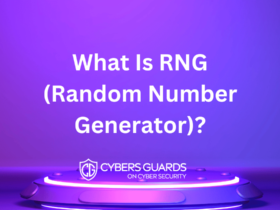To create a game, you need to bring together a lot of different specialists: programmers, artists, designers, testers, managers and others. To achieve optimal balance, every aspect of the game must be thought out to the smallest detail. This also applies to an economic system designed to bring currency order into play.
What is meant by currency order? Each game has a monetary system that motivates players to collect points or currency as they progress through levels. Subsequently, using these items, the player can purchase useful things that simplify progress or add aesthetics to the game. A properly constructed economic system not only optimizes the player’s interaction with the product, but also contributes to an increase in the level of retention. Therefore, now every successful game design studio has on board at least one specialist in economics.
To put the economy in order in the game, you need to understand its fundamentals. We are here to voice the most important knowledge base for you.
Objectives of the Game
Each person plays a game with a specific purpose. In other words, there are several types of players who see their ideal progress differently. One plays in order to quickly see what will be in the end. Another seeks to score maximum points and become the leader of the tournament table. The third wants to buy everything that is available for purchase. The fourth doesn’t care about what is happening in the game, he or she just needs to pass the time. Regardless of which of them started playing, the economic system must be flawless for everyone.
To ensure this, you need to think over all the numerical indicators for each of the possible scenarios for the passage of the game. Suppose that the player has collected all the play money in the level and estimate what they can now acquire. It is necessary that for the most zealous there was approval in the form of some kind of bonus or the opportunity to purchase a previously inaccessible thing. This will be an additional incentive for the most active.
When developing game design, it is also important to estimate the time it will take to progress within one level. The distribution of resources across the level should be even and look natural. As the levels become more complex, you can modify the reward system, making resources rarer, but also more valuable.
Keeping the Balance of Income and Expenses
If the game provides an opportunity to make purchases, then the players will certainly take advantage of it. Even if we are not talking about investing real money, shopping always adds fun to the game. And here it is necessary to clearly calculate the balance between the points and money received by the player and the prices of purchased items.
The purchases don’t have to be very expensive and force the player to save up throughout many levels for a mediocre bonus. This is more demotivating and makes the player forget about buying. But the store should also not have too low prices, otherwise, the player will quickly buy everything and most likely finish the game much faster than you would like. Your task is to provide enough resources to maintain interest and be able to maintain this balance at each of the following levels.
More and Less Valuable Resources
When thinking about the economic system, it is important to differentiate between those items that help in-game progress and those that serve other purposes. The art of game design of the economic direction is to maintain a certain deficit of the former and be more generous with the latter.
Items that help the player advance in the game are, for example, extra hit points, the ability to instantly solve a complex riddle, special abilities, and more. Their number should be limited to purchase both for points earned and for real money that a person invests in his or her favorite game. If you allow an excess of these elements, people will end too quickly.
Items that do not help in the passage of the game, but evoke pleasant emotions, are something like clothing, jewelry, or, as an option, changed elements of the interface. By themselves, these bonuses have no game value, but they attract the player from the aesthetic side. Also, do not forget about the players for whom the goal is to buy everything they can. This category of elements can be much broader and richer than the previous one. Let people save and spend points here with virtually no limits. At the same time, remember that here, too, prices should be neither too high nor too low to maintain a reasonable balance of desires and possibilities.
Final Thoughts
Even the simplest 2D game where the player does not need to spend real money requires a well thought out economic system. Even when it comes to accumulating points and compiling a rating based on them, this cannot be done randomly.
You do not need to fear that this task is beyond your strength. If you do not have a suitable specialist, you can always contact a game design company that provides 2D animation services: there are always experts who are well versed in game economic issues.










Leave a Reply